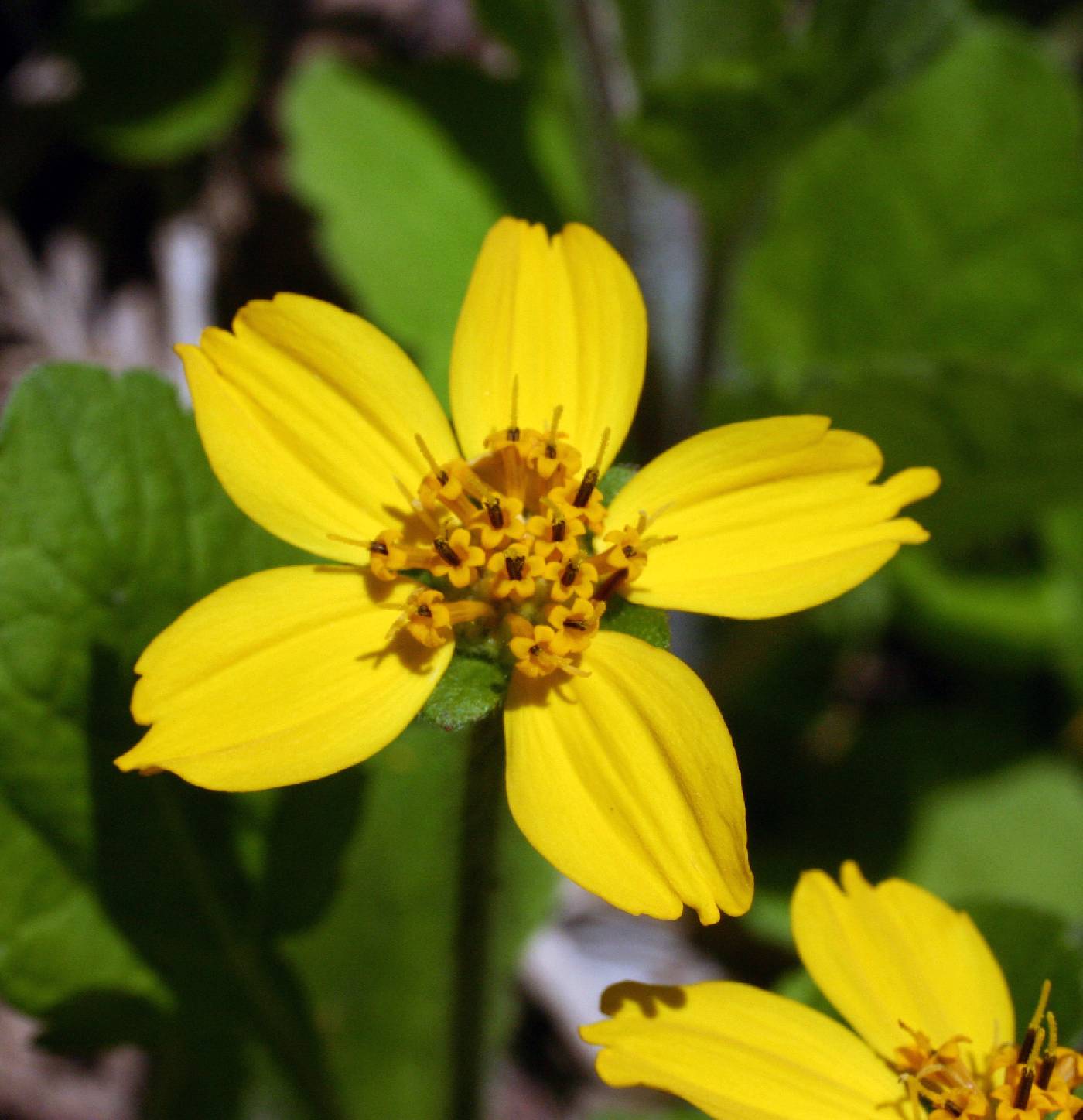Chrysogonum
|
Family: Asteraceae |
Perennials, 2-30(-50) cm (aerial stems from fibrous-rooted rhizomes to 5 cm). Stems erect to erect-ascending (flowering) or prostrate (vegetative stolons), branched from bases or ± throughout (villous). Leaves basal and cauline; opposite; petiolate; blades elliptic-ovate to deltate-ovate, bases cordate or truncate to cuneate, margins crenate, faces hairy. Heads radiate, borne singly or in pairs. Involucres cupulate-hemispheric, 7-10 mm diam. Phyllaries persistent (outer), 8-10 in 2 series (outer spreading, oblong-oblanceolate, foliaceous, inner erect, greenish, smaller, ± scarious). Receptacles flat to shallowly convex, paleate (paleae oblanceolate, scarious). Ray florets 5(-6), pistillate, fertile; corollas yellow. Disc florets 25-50, functionally staminate; corollas yellow, tubes shorter than narrowly funnelform throats, lobes 5, deltate. Cypselae (blackish brown) strongly obflattened, obovoid to obovate (each basally adnate to 1 inner phyllary, 3 paleae, and 3 disc florets, the 'cypsela-complexes' falling as units); pappi persistent, coroniform (asymmetric). x = 16. Each cypsela-complex includes an elaiosome (a fleshy, oil-bearing structure at the base of the phyllary) and two associated paleae. Ants carry cypsela-complexes into their underground nests, chew off the elaiosomes, and return the undamaged cypselae or complexes to the surface. Chrysogonum virginianum has been divided into two species (e.g., J. K. Small 1933) or treated as a single species with two varieties (e.g., A. E. Radford et al. 1968; T. F. Stuessy 1977). Stuessy mapped many intermediates between two varieties, not only in the area of North Carolina and South Carolina where their ranges meet, but also practically throughout both their ranges. G. L. Nesom (2001) found three allopatric taxa, separated primarily by habit (production or not of stolons) and morphology of flowering stems. Plants treated here as C. virginianum var. australe might justifiably be treated at specific rank. All three taxa of Chrysogonum are now used as garden plants and are sold in nurseries under horticultural names.
Heads radiate, the rays few, uniseriate, yellow, pistillate and fertile; invol bracts in 2 series of ca 5, the outer herbaceous and surpassing the disk, the inner more chartaceous and subtending the rays; receptacle flat, chaffy; disk-fls sterile, with undivided style; achenes ±compressed parallel to the invol bracts, wingless; pappus a short, half-cup-shaped crown; each inner invol bract grown to 2 or 3 adjacent receptacular bracts at base, thus partly enclosing the achenes, all falling as a unit; perennial herbs with opposite lvs and rather small heads. Monospecific. Gleason, Henry A. & Cronquist, Arthur J. 1991. Manual of vascular plants of northeastern United States and adjacent Canada. lxxv + 910 pp. ©The New York Botanical Garden. All rights reserved. Used by permission. |

